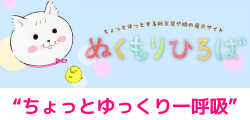ホーム › 掲示板(ご質問等) › 【“ぬくもろひろば” のこと】 › Responsive Typography Techniques with CSS
- このトピックは空です。
-
投稿者投稿
-
AntonTumma
ゲストIn this guide, we will explore everything you need to know about CSS z-index and how you can use it to create stunning web designs.
What is CSS Z-Index?
CSS z-index is a property that allows you to specify the stacking order of elements on a web page. Elements with a higher z-index value will appear on top of elements with a lower z-index value. This property is particularly useful when working with overlapping elements, such as images, text, and buttons.
By using the z-index property, you can control the visual hierarchy of your web page and ensure that important elements are always visible to users. This can greatly enhance the user experience and make your website more engaging and interactive.
How to Use CSS Z-Index
To use the z-index property in CSS, simply add the z-index value to the element you want to control the stacking order for. For example, you can set a higher z-index value for a navigation menu to ensure that it appears on top of other elements on the page.
You can also use negative z-index values to move elements behind other elements on the page. This can be useful when creating layered effects or hiding elements that you want to be displayed later.
Benefits of Using CSS Z-IndexImproved Visual Hierarchy: By using the z-index property, you can create a clear visual hierarchy on your web page and ensure that important elements stand out to users.
Enhanced User Experience: A well-designed stacking order can greatly enhance the user experience and make it easier for users to navigate your website.
Greater Design Flexibility: CSS z-index gives you greater control over the layout and design of your web page, allowing you to create more dynamic and interactive designs.Best Practices for Using CSS Z-Index
When using the z-index property in CSS, it’s important to follow some best practices to ensure that your web designs are effective and visually appealing.Avoid Using High Z-Index Values: Try to keep your z-index values low to prevent potential stacking issues and maintain a clean and organized design.
Use z-index sparingly: Only use the z-index property when necessary, as overusing it can make your CSS code more complex and difficult to manage.
Test Your Designs: Always test your web designs on different devices and browsers to ensure that the stacking order works correctly and looks good to users.Conclusion
In conclusion, CSS z-index is a powerful tool that can help you create visually appealing and interactive web designs. By understanding how to use the z-index property effectively and following best practices, you can take your web development skills to the next level and create stunning websites that engage users and drive results.
Click here to expand your knowledge: https://trendingdots.com/15-ways-to-manage-your-it-services-elevates-business-operations/CSS Grid: The future of web layout
JorgeSef
ゲストп»їbest mexican online pharmacies: Mexican Easy Pharm – Mexican Easy Pharm
Rodneyabugh
ゲストmexico drug stores pharmacies https://mexicaneasypharm.com/# medicine in mexico pharmacies
п»їbest mexican online pharmaciesRodneyabugh
ゲストmedication from mexico pharmacy https://mexicaneasypharm.shop/# mexico drug stores pharmacies
mexican rx onlineRodneyabugh
ゲストmexican border pharmacies shipping to usa https://mexicaneasypharm.com/# Mexican Easy Pharm
mexican online pharmacies prescription drugsAlbertveick
ゲストhttps://dappharm.com/# priligy
compare prednisone pricesAlbertveick
ゲストhttp://cytpharm.com/# purchase cytotec
generic prednisone 10mgAlbertveick
ゲストhttps://kamapharm.com/# Kama Pharm
steroids prednisone for saleAlbertveick
ゲストhttps://semapharm24.shop/# SemaPharm24
50 mg prednisone tabletAlbertveick
ゲストhttps://dappharm.shop/# cheap priligy
where can i order prednisone 20mgAlbertveick
ゲストhttp://dappharm.com/# dapoxetine price
generic prednisone otcAlbertveick
ゲストhttps://kamapharm.shop/# Kama Pharm
generic prednisone costAlbertveick
ゲストhttp://semapharm24.com/# semaglutide tablets for weight loss
prednisone 10 tabletAlbertveick
ゲストhttps://semapharm24.com/# semaglutide tablets
prednisone 4mg tabAlbertveick
ゲストhttp://cytpharm.com/# buy cytotec
generic prednisone online -
投稿者投稿




